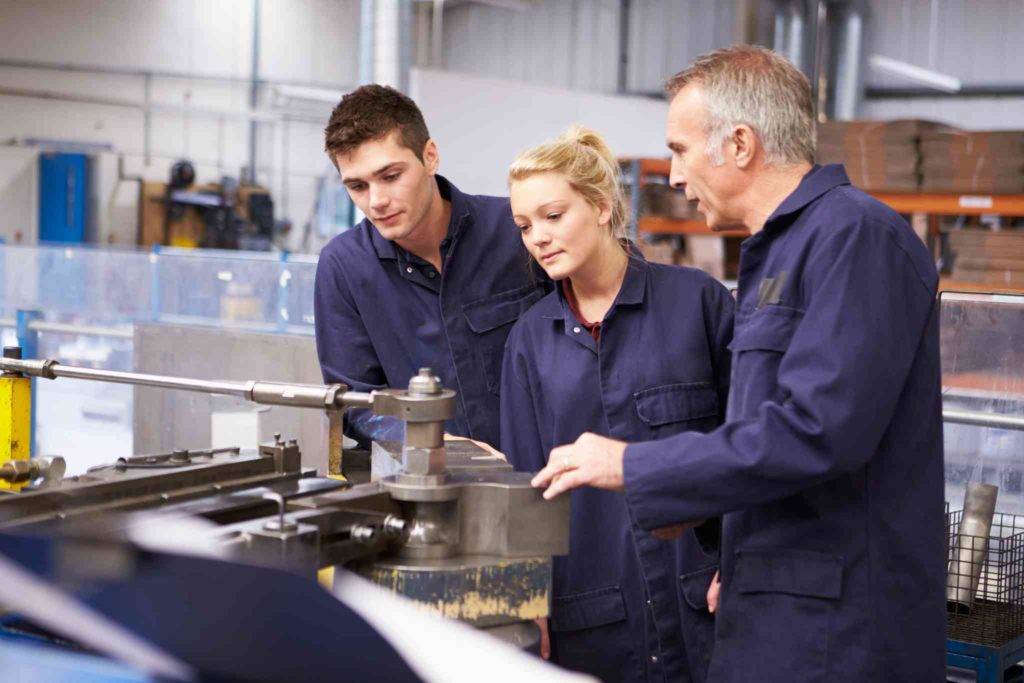October 5, 2018 was Manufacturing Day — a day started by the National Association of Manufacturers (NAM) to inspire the younger generation to pursue careers in manufacturing. During this day, 3,000 manufacturers opened their facilities to students of all school ages. These Manufacturing Day “open houses” are conducted in hopes of addressing the upcoming workforce shortage when Baby Boomers start retiring.
According to the Bureau of Labor Statistics, more than 76 million Baby Boomers (people born within 1946-1964) are expected to retire in the coming years, and their current labor participation rate will fall from 80% to below 40% by 2022. CFO Magazine says that 10,000 boomers reach retirement age every single day in the U.S., leaving six million jobs unfilled each month.
This is concerning to employers in almost every industry, but most especially those within the manufacturing sector. Baby Boomers typically make up 22-27% of a manufacturing workforce. What’s even more concerning than the upcoming exodus of the Boomers are the lack of interest among the next biggest generation, the Millennials (people born within 1980-1996), to take up careers in manufacturing.
In a research conducted by Deloitte, the U.S. public ranks manufacturing as vital to the domestic economy, yet only 30% of the same group would encourage their children to pursue manufacturing jobs. In the same research, Millennials rank manufacturing as their least preferred career destination.
But Why?
Brian Fortney, global business manager for Training Services at DesignNews.com said, “The challenge for manufacturers in the US isn’t foreign manufacturing, it’s the high school guidance counselor. They don’t understand that manufacturing is high tech. The plants are not dark and dangerous.”
“Perception is a big issue,” Carolyn Lee, executive director of the Manufacturing Institute said. “Part of the reason for this challenge is that people don’t understand what modern manufacturing is all about. People think of manufacturing as old and antiquated when it’s not.”
HOW CAN EMPLOYERS ADDRESS THIS ISSUE?
1. Bridge the gap between Boomers and Millennials
Some employers are having a hard time letting go of Boomers due to their years’ of experience and knowledge. According to Eric Gibson, President of Ultra Machining, “We have discouraged workers from retiring. We need more qualified employees. We are short of good help.”
With Millennials, training them properly is essential for a smooth transition. Aerospace giant Lockheed Martin’s Critical Skills Management Program is a good example of how they’re utilizing their senior employees to train the junior ones. This program pairs up a junior employee with a member of the management team, typically that employee’s direct supervisor, to work together on planning and arranging assignments.
2. Bust the myth of “dirty” manufacturing
One of the biggest drivers of Manufacturing Day is to show the younger generation that manufacturing is not the archaic perception of assembly lines and conveyor belts. According to Industry Week Magazine, “It’s no secret that Millennials are a tech-savvy generation, having grown up as ‘digital natives.’ Generating awareness around the state-of-the-art technologies and innovation that manufacturing relies on, provides companies an opportunity to compete with the appeal of Silicon Valley jobs. These technologies include wearable AR/VR devices, advanced robots, and more.”
3. Promote manufacturing jobs as high-paying careers
A big driving factor for Millennials to want to pursue manufacturing careers would be its above-average salary. According to the Society of Manufacturing Engineers, the Average U.S. manufacturing worker makes $77,506 a year. Over the last 10 years, the average income for manufacturing workers has risen steadily from $17.50 per hour to the current average of $21.50.
Jay Timmons, President and CEO of NAM said, “A career in modern manufacturing is high paying—and often does not require a debt-inducing four-year college degree. The average manufacturing employee earns about 25% more in pay and benefits than the average worker across all industries. The work itself is high tech, hands-on and fulfilling. Today’s manufacturing companies are technology companies, relying on coders, programmers, technicians and more to keep production running.”
The number of companies participating in Manufacturing Day has grown every year since its conception in 2012.
In the Bay Area, SME Silicon Valley sponsored high school students in the Tri-Valley school district and college students from Las Positas College to tour manufacturing companies’ facilities in the Fremont and Alameda area. Companies who opened their doors included Lam Research, Sandia National Lab, Peridot and Abbott.
Manufacturing Day and the ongoing efforts to recruit the younger generation to careers in manufacturing is still an uphill battle. It’s not an easy feat to replace Baby Boomers who will be leaving the workforce soon, but cultivating an interest in manufacturing to the younger generation is an integral movement to keep the industry alive.
“This is a long-term challenge to be sure, but above all, it’s a promising opportunity for young people. And parents should be reassured that modern manufacturing offers what they want for their children: a solid career, a bright future and a chance to be ‘better of’”, Timmons said.

